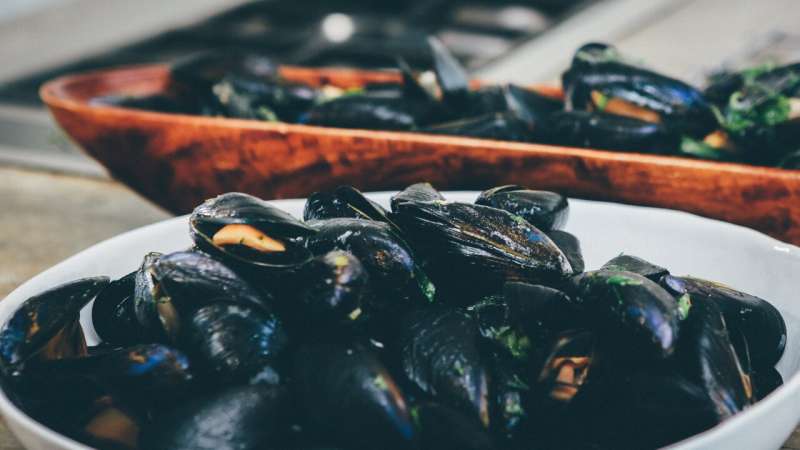This article has been reviewed according to Science X's editorial process and policies. Editors have highlighted the following attributes while ensuring the content's credibility:
fact-checked
peer-reviewed publication
trusted source
proofread
Study finds a new pathway connecting diet, genetics and body weight

A new biochemical pathway linked to diet and body weight hints at the possibility of a new class of anti-obesity drugs, Stanford Medicine researchers and their colleagues have found.
The study, conducted in mice, found a relationship between a previously unstudied body weight-associated gene called PTER and an amino acid called taurine, which has been associated in some studies with reductions in body weight and improvements in endurance exercise.
The newly identified relationship highlights a body weight-regulating metabolic pathway independent of the mechanisms of weight loss drugs like Ozempic or Wegovy, suggesting the two approaches could work in tandem to one day provide additional options for weight control in people.
"This is an additional branch of a very complex system of feeding and body weight regulation," said Jonathan Long, Ph.D., an assistant professor of pathology.
"We all want to know, 'What should I eat? When should I eat it? How does it affect me?' But many diet-based studies offer confusing information. We are trying to answer this question in a more concrete way—starting with molecules, then pathways, then working our way up to the physiology."
Long is the senior author of the study, which was published Aug. 7 in Nature. Postdoctoral scholar Wei Wei, Ph.D., is the lead author of the research.
Weight, nutrition and hunger: A complex relationship
The complicated web of interactions that govern when we get hungry, what and how much we eat, and how much we weigh is exceedingly difficult to untangle. Previous research in Long's laboratory uncovered a relationship between an "anti-hunger" molecule called lac-phe produced after vigorous exercise and the diabetes drug metformin that can cause moderate weight loss.
In the new study, Wei and Long focused on taurine, which is abundant in protein-rich foods such as meat and shellfish. Taurine supplementation in mice can lower body weight and enhance exercise performance.
Conversely, mice genetically engineered to have low levels of taurine show muscle atrophy and a decreased capacity for exercise. But exactly how taurine has these effects has been unclear.
"Taurine does all sorts of stuff in our bodies, and is metabolized in many different ways," Long said. "It's a complicated soup."
One byproduct, or metabolite, of taurine is called N-acetyltaurine, which is formed when taurine and another molecule called acetate are combined. Levels of N-acetyltaurine in the body fluctuate in response to physiological changes—including endurance exercise and diet—that affect taurine and acetate levels.
As they were exploring taurine metabolism and its relationship to body weight, Wei and Long identified an enzyme called PTER, for phosphotriesterase-related, that converts N-acetyltaurine back into taurine. (Many metabolic pathways can run both forward and backward—a molecular seesaw that allows the body to respond nimbly to changes in diet, exercise and other variables.)
The gene that encodes PTER is part of a panel of genes that have been associated with body mass index in humans. Mutations in one, MC4R, cause people to feel hungry all the time and are strongly associated with obesity. But many of the others, including PTER, have remained mysterious.
"Despite this genetic association, no one really knew what PTER did or why it was linked to body mass index in humans," Long said. "It was an orphan gene that encoded an orphan enzyme. Now we know that PTER breaks down, or hydrolyzes, N-acetyltaurine."
Teasing out molecular effects
When Long and Wei studied mice in which the PTER gene had been knocked out, they found that the animals had higher levels of N-acetyltaurine in their blood and tissues than control mice—a not unexpected finding when PTER is missing.
When they were fed a diet high in fat, and given taurine in their drinking water, the mice without PTER ate and weighed significantly less than the control animals after eight weeks. The difference in body weight was due entirely to a reduction of fat mass in the knockout animals, the researchers found.
Next, they tested whether giving the mice N-acetyltaurine directly had a similar effect. They found that a daily dose of N-acetyltaurine reduced body weight and food intake in both PTER knockout mice and the control animals fed a high-fat diet.
Further studies showed that the PTER pathway is independent of the pathway used by the GLP1 receptor agonists, such as Ozempic, currently on the market.
"This is a complicated interaction of genetics and diet that can regulate the body weight of these animals," Long said. "This is a fundamental advance in understanding how we eat affects our weight and our bodies."
Interestingly, it's not clear how N-acetyltaurine is made. It is possible that the gut microbiome plays a role. The researchers found that mice treated with antibiotics for one week to kill off much of their gut bacteria had 30% less N-acetyltaurine circulating in their bodies than before treatment.
"This possible role of the gut microbiome is interesting in the context of research into the rational manipulation of our intestinal bacteria for health," Long said. "Perhaps we could one day have probiotic or dietary interventions that promote the formation of N-acetyltaurine to reduce body weight. But much more work needs to be done."
Long and his colleagues are continuing their studies of PTER and taurine metabolites in people. The task is daunting but exciting.
"All of the stuff we eat, and we eat a lot of stuff, can interact with our bodies at a molecular and genetic level," Long said. "It's not a simple code. But we're starting to understand these intersecting pathways at a much more granular level than ever before."
More information: Wei Wei et al, PTER is a N-acetyltaurine hydrolase that regulates feeding and obesity, Nature (2024). DOI: 10.1038/s41586-024-07801-6
Journal information: Nature
Provided by Stanford University





















